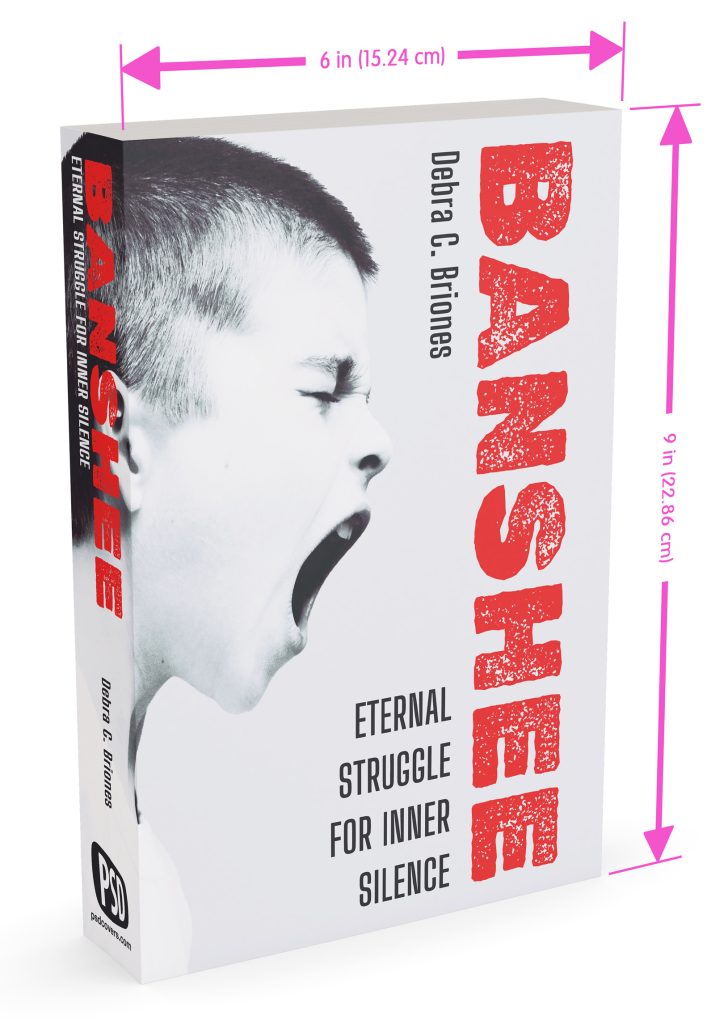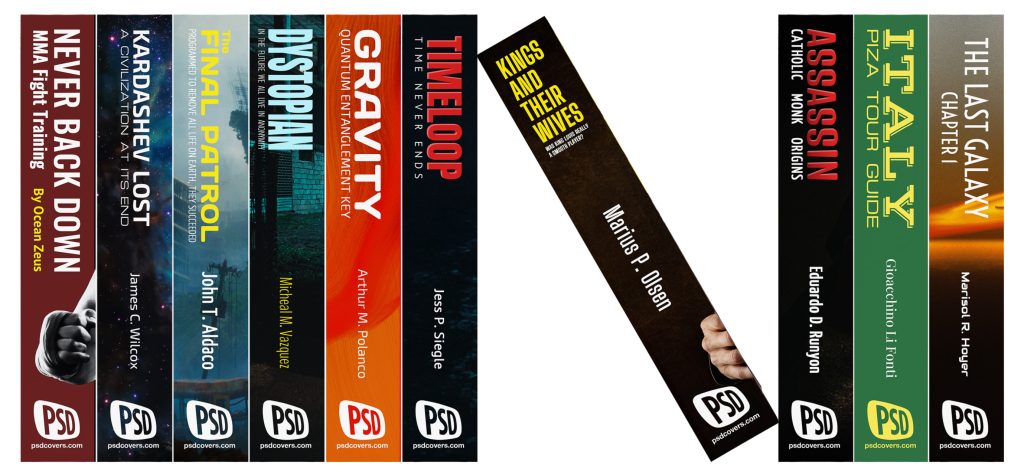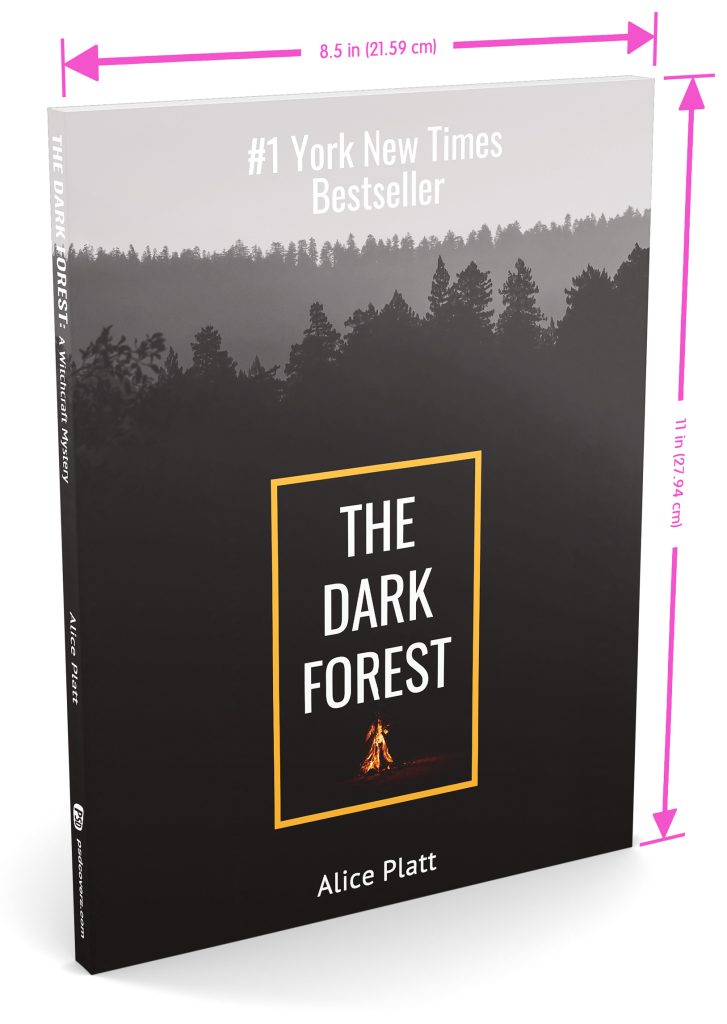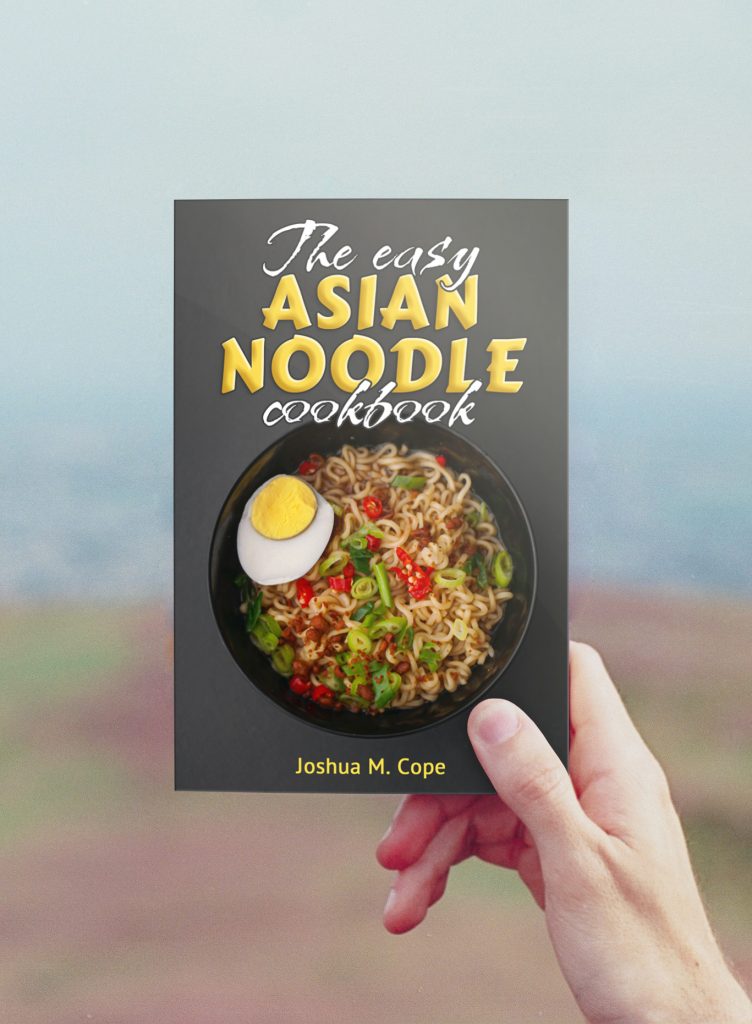How To Choose A Trim Size For My Book Cover

Your journey as an author isn’t complete without designing a compelling book cover. One crucial part of this process is deciding on the “trim size”, which, in essence, is the final size of your book after its pages have been cut. Now, if you’re wondering why this is so important, let me tell you this: the trim size plays a pivotal role in the physical appeal and readability of your book.
[KiwiClickToTweet tweet=”Everything I need to start choosing a trim size for my book cover.” quote=”Everything I need to start choosing a trim size for my book cover.”]So, you’ve got your manuscript ready, you’re brimming with ideas for your cover design, but you’re stuck on the trim size? Don’t worry! Let’s dig into the nitty-gritty of book sizes and uncover how to pick the best trim size for your book cover.
Overview of Trim Size
Your new story is fantastic, and you’re ready to share it with the world. The manuscript is polished, and now you’re faced with the task of designing a captivating book cover that will make your readers swoon. But hold on, where do you start? Well, the first, and one of the most critical steps, is deciding on the “trim size” of your book. But what exactly is this trim size we’re talking about, and why is it so crucial? Let’s dive right in and discover this together.

The BANSHEE Book Cover template is a free 6×9 trim size example PSD download.
Simply put, trim size is the final size of your book once it is printed and bound. Imagine you’ve just bought a new paperback book. The height and width that you’re holding in your hands—that’s the trim size. It’s like the DNA of your book—it shapes its identity, influences the cover design, and contributes to the overall reader experience.
But the real beauty of the trim size lies in its role in crafting your book’s first impression. After all, the cover of a book plays a major role in attracting readers, and the trim size is like the canvas of this artwork. Choosing the right trim size can make your book feel more professional and visually appealing, drawing in potential readers like a magnet.
And here’s the kicker: the trim size isn’t just about the cover; it also directly impacts the interior of your book. It affects aspects such as the length of your book in terms of page count, the layout of the text, and even the cost of publishing. The trim size is like the unsung hero, working behind the scenes to enhance the readability of your book and provide a seamless reading experience.
Now, you might be thinking, “Great, but how do I choose the right trim size for my book?” Well, it largely depends on your book’s genre, your publishing platform, and your personal preference. But don’t worry! With a little research and planning, you can make a choice that best suits your masterpiece and makes it stand out on any bookshelf.
In essence, the trim size is more than just a physical attribute—it’s a powerful tool that can make your book a joy to read and a beauty to behold. So, as you embark on your publishing journey, remember to give your trim size the consideration it deserves. After all, it’s the foundation upon which your book cover design will rest.
Importance Of Choosing The Correct Trim Size
Choosing the correct trim size for your book is akin to picking the right outfit for a grand event. It might seem like a small detail, but when done right, it can make a massive difference to your book’s appeal and success. Imagine picking up a book that feels too heavy or awkward to hold, or whose text appears too cramped or too sparse due to the wrong trim size. Not quite the reading experience you’d want, right? But when you choose the correct trim size, it’s a whole different story.
The correct trim size can enhance your book’s look and feel, making it more attractive to potential readers. Think about it – when you browse a book store or scroll through an online catalog, your first interaction with a book is through its cover. A book with the right trim size will feel good in the reader’s hands, will fit neatly on their bookshelf, and can even influence the readability of the text inside. In a nutshell, the right trim size forms the backbone of a positive reading experience, and who wouldn’t want that for their readers?
So, let’s put it this way: if your book was a person, the trim size would be its physique. It plays a crucial role in creating the first impression and sets the tone for what’s inside. It’s not just about aesthetics – it’s about creating a visual harmony that matches the quality of your content. In the end, choosing the correct trim size is like stitching together the perfect outfit for your book – one that enhances its personality and makes it shine on the grand stage of publishing.
Understanding Book Trim Sizes
If we get down to basics, the trim size refers to the dimensions of your book — width and height — after its pages have been cut from the printer. Just like a tailored suit, the trim size of a book can be standard or custom. Standard book sizes are most common, but custom sizes can add a unique touch to your book.
Let’s picture the standard size of a book. Picture a typical paperback book in your hands. Standard trim sizes are prevalent because they are familiar to readers and fit well on bookshelves and in shipping boxes. These sizes typically include options like 5″ x 8″ (a common pocket book size), 6″ x 9″, or 8.5″ x 11″ among others.
Conversely, custom trim sizes are bespoke to your book’s needs, but remember, they can lead to additional production costs and may not fit as comfortably in readers’ hands or on their shelves.
Definition Of Trim Size
Imagine you’re at a bookstore, and you’ve just picked up a book that has caught your eye. You hold it in your hands, feeling the weight, the smoothness of the cover, the dimensions it carries. These dimensions, the height and width of the book that you’re holding—that’s what we call the “trim size.” Simply put, the trim size is the final size of your book once it’s been printed and bound, ready to captivate readers.
But trim size isn’t just a measure of dimensions; it’s an essential part of the identity of your book. It influences everything from the cover design to the layout of the text inside, and even the overall reader experience. It’s like the blueprint of your book, the starting point that sets the stage for the design process. With the right trim size, your book not only looks and feels professional but also provides an enjoyable and comfortable reading experience.
Different Types Of Trim Sizes
Stepping into the world of book publishing, you’ll encounter an array of different trim sizes, each with its unique appeal. Like the vast variety of books themselves, trim sizes come in a range of standard and custom sizes. Standard trim sizes are like the tried and true friends of the book world. They’re familiar, commonly used, and provide a sense of comfort to the readers. These include sizes like 5″ x 8″, 6″ x 9″, or 8.5″ x 11″. They fit comfortably in readers’ hands, look great on the bookshelf, and are easily accommodated by most printing and distribution services.
Standard Trim Size Examples
- Fiction: 6in x 9in
- Nonfiction: 5.5in x 8.5in
- Thrillers/Mysteries: 5.25in x 8in
- Young Adult Fiction: 5in x 7in
- Young Adult Sci-Fi: 5.5in x 8.5in
- Self Help: 5.25in x 8in
- Inspirational: 5in x 8in
- Memoir: 5.25in x 8in
- Reference: 6in x 9in and 7in x 10in
- Children’s Books: 8.5in x 8.5in
- Business: 5.5in x 8.25in or 5.25in x 8in
Now, let’s talk about custom trim sizes. These are the daredevils, the innovators of the trim size world. They step away from the norm, offering a unique dimension that can make your book stand out from the crowd. Going for a custom size means you’re tailoring the trim size specifically to your book’s needs. But remember, with great customization comes great responsibility. Custom sizes can be more challenging to print and distribute, and they might not always align with reader expectations.
Regardless, they offer an opportunity to think outside the box and make your book truly one-of-a-kind. So whether you go with a standard or custom size, the key is to choose a trim size that best suits your content, your audience, and your publishing goals.Factors to Consider When Choosing a Trim Size
The size of a book is more than just aesthetics—it directly impacts the reader’s experience. The first thing to consider is your genre. For example, fiction books commonly use smaller sizes such as the pocket book size, while non-fiction or textbooks often require larger sizes for their detailed content.
Audience preference is another key consideration. Do your readers prefer a larger text that’s easy on the eyes? Or do they favor compact sizes for their commute? Cost also plays a crucial role in this equation. Smaller books are less expensive to produce, making them an attractive choice for authors working on a budget. Yet, the decision doesn’t end here. You also need to think about your distribution channels and physical constraints like paper type and binding.
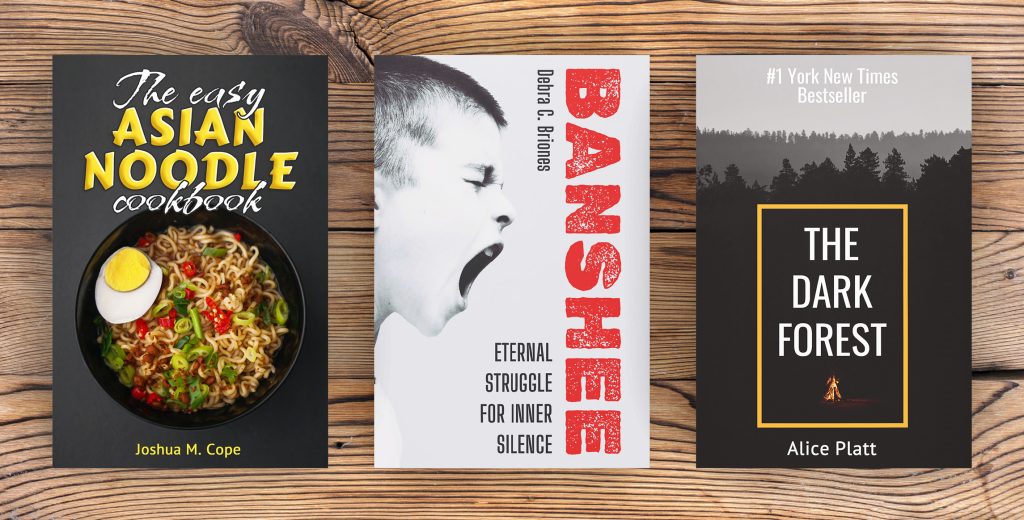
Attractive Smaller 6×9 Trim Size Books Are Part Of Our Mockups For Free Collection.
Genre Of The Book
Choosing the right trim size for your book is a lot like picking the perfect outfit. It’s about finding something that suits your style and personality, right? Well, in the book world, this “style and personality” is defined by the genre of your book. The genre is like the personality of your book, and it can guide you towards choosing a trim size that complements this personality.
Thrillers, mysteries, and romance novels, for instance, are often seen in the more compact mass-market paperback size (about 4.1″ x 6.8″), perfect for on-the-go readers who love a good story that fits snugly in their bag. In contrast, non-fiction, textbooks, and manuals typically go for a larger trim size (like 7″ x 10″ or even 8.5″ x 11″), allowing for clear, detailed layouts and diagrams. Graphic novels and children’s books also tend to have larger, often square dimensions to showcase the visual elements.
So, what does this mean for you as an author? It’s simple. By understanding your genre and its conventions, you can choose a trim size that not only enhances the visual appeal of your book but also meets the expectations of your readers.
Audience Preference
Just like a seasoned tour guide, your audience can provide valuable insights to navigate the vast landscape of trim sizes. Audience preferences play a pivotal role in determining the most suitable trim size for your book cover. After all, your readers are the ultimate consumers of your work, and keeping their preferences in mind can greatly enhance their reading experience.
Let’s consider this: young adult and middle-grade readers often prefer books that are easy to carry around and read on the go, leading to smaller trim sizes being popular in these genres. On the other hand, professional textbooks or coffee table books are often larger to accommodate detailed graphics or diagrams. Audience preference even extends to the feel of the book in their hands – hardcover books might appeal to a reader who likes a sturdy, durable book, while paperbacks are lightweight and perfect for a reader who loves to read while commuting. Paying attention to these nuances can significantly influence your trim size decision.
Production Cost
While dreaming big and shooting for the stars is an admirable approach, we also have to keep our feet firmly planted on the ground when it comes to the reality of production costs. It’s the not-so-glamorous, yet incredibly essential part of the publishing process. The trim size of your book cover plays a substantial role in determining these costs, and it’s a factor that shouldn’t be overlooked.
Larger books require more paper and ink, thus driving up the ftrim sizecost of production. Additionally, if you opt for a custom size that’s not standard in the industry, you could incur additional charges because the printing process may require special handling. However, it’s not all just numbers and dollar signs. Strategically choosing your trim size, while considering the production costs, can still result in a professional and visually appealing product. It’s about finding that sweet spot – a trim size that not only highlights your content and appeals to your readers but also aligns with your budget.
Distribution Channels
Venturing into the book publishing world, one quickly learns the importance of distribution channels. It’s like planning a grand party—you need to ensure that the invitations reach the right people, at the right time, and at the right place. Similarly, the trim size of your book can impact where and how your book is distributed, making it a crucial part of your publishing strategy.
If you’re considering a print-on-demand service or an online platform, you’ll want to double-check their available trim sizes before making your decision. Most of these platforms offer a variety of standard sizes, but if your book is a unique or custom size, it might not be supported. On the flip side, brick-and-mortar bookstores also have specific requirements and preferences when it comes to book sizes. For instance, books that are too big or too small may not fit well on their standard shelves and might be passed over.
Physical Constraints (Paper type, Binding)
When we talk about physical constraints in book publishing, think of it as a dance. The paper type, binding, and trim size all need to move in harmony to create the perfect rhythm. For instance, if you’re publishing a colorful children’s book or a cookbook full of enticing images, you’ll likely want a larger trim size with glossy paper to make those pictures pop. On the other hand, if you’re publishing a paperback novel, a smaller, more manageable size with standard paper is usually the way to go.
The type of binding also plays a role. Perfect-bound books (where the pages are glued together at the spine, like a typical paperback) allow for a range of sizes, while other types of binding, like spiral or saddle-stitch, may have more restrictions. In essence, it’s all about ensuring that these elements—trim size, paper type, and binding—gracefully waltz together to create a book that is not only aesthetically pleasing but also practical and durable for your readers.Impact of Trim Size on Book Cover Design
Visual balance is key to any great book cover design, and your book’s trim size plays a significant role in creating this balance. Selecting a trim size isn’t just about the size of a book; it’s about how that size interacts with your cover elements. A larger trim size gives you more real estate for your title, imagery, and blurb, while a smaller size demands careful consideration of each design element.
Typography and imagery are central to your book cover, and their effectiveness is greatly influenced by your chosen trim size. Smaller sizes may require simpler, bolder designs, while larger sizes can accommodate more complex layouts and detailed imagery.
Importance Of Visual Balance
Visual balance is the secret ingredient that transforms your book cover from ordinary to extraordinary. It’s like the delicate seasoning in a gourmet dish, subtly enhancing the overall flavor without overpowering it. The trim size of your book plays a pivotal role in creating this balance. It helps frame your cover design, ensuring that the title, author name, and any images or graphics are proportionally arranged and pleasing to the eye.
A harmoniously balanced cover can instantly attract potential readers, enticing them to pick up the book and dive into its content. Remember, your book cover is the first impression readers have of your work—make it count! By carefully considering your trim size in relation to your cover design, you’re not just creating a visually balanced book cover, you’re creating a powerful beacon that draws readers towards your storytelling world.Relationship Between Book Cover Design And Trim Size
The relationship between cover design and trim size is a lot like a dazzling dance duo – each element must complement the other to create a show-stopping performance. The trim size sets the stage, defining the space within which your cover design can shine. It determines the layout, the proportions, and even the font size of your title and author name. Meanwhile, the book cover design brings the drama and emotion, luring readers with its enticing visuals and bold typography.
When the trim size and cover design move together in perfect harmony, they create a powerful visual allure that can captivate readers at first glance. So remember, when you’re choosing your trim size, you’re not just picking dimensions for your book—you’re choreographing a spectacular dance that has the potential to captivate your audience from the moment the curtain rises.Influence On Imagery And Typography Choices
Choosing a trim size for your book is much like setting the stage for a theater play. It influences the space available for your visual imagery and typography, which are the stars of the show. Larger trim sizes can accommodate grand, detailed imagery and bold typography, making them excellent choices for books that rely heavily on visual storytelling. On the flip side, smaller trim sizes might call for more minimalistic design elements, allowing the subtlety of the imagery and typography to shine. In essence, the trim size guides your choices in imagery and typography, helping you choose the perfect actors to take center stage on the cover of your book.
Practical Steps to Determine Your Book’s Trim Size
So, how do you decide what’s the best trim size for your book? A practical way to start is by analyzing similar books in your genre. What’s the standard book size for these books? Do they use a pocket book size, or something larger? This can give you a good sense of what your readers might expect.
Next, consider the publishing platforms you intend to use. Whether you’re self-publishing or working with a traditional publisher, check their guidelines. They’ll often suggest or even dictate certain trim sizes. If in doubt, consulting with a professional book designer can be worth its weight in gold. They can guide you through the process, considering both the visual and practical aspects of your book’s trim size.
Analyzing Similar Books In Your Genre
Analyzing similar books in your genre is like gathering valuable intel for your mission: creating an irresistible book cover. Take a stroll through a bookstore or browse online, and you’ll discover patterns in trim sizes that prevail in your genre. Romance novels may lean towards more pocket-friendly sizes, while cookbooks and art books generally showcase their vibrant visuals in larger dimensions. This investigation isn’t about copying what’s already out there, but rather understanding the expectations of your audience and the industry norms. Armed with these insights, you can choose a trim size that not only aligns with these expectations but also carves out a unique identity for your book.
Considering Your Publishing Platform’s Options
Considering your publishing platform’s options is like taking a tour of your new home—you need to know what spaces are available to you and how you can make them work best. Different publishing platforms offer different trim sizes, and understanding these options is a crucial step in your publishing journey. If you’re using a print-on-demand service, you’ll find a range of standard sizes at your disposal. Traditional publishers, too, will have their preferred sizes based on cost, distribution, and genre norms.
Therefore, understanding these options can help you select a trim size that’s not only practical and cost-effective but also enhances the appeal of your book. It’s all about exploring your new home, familiarizing yourself with its layout, and decorating it to reflect your unique style—creating a book that’s truly a mirror of your vision.Consulting With A Professional Book Designer
When it comes to choosing the perfect trim size for your book, consulting with a professional book designer can be the equivalent of seeking a personal stylist’s advice. These experts bring their industry knowledge, technical skills, and creative insights to the table, ensuring that your book doesn’t just fit the standards—it sets new ones.
A book designer can guide you through the labyrinth of industry norms, reader expectations, and cost factors, helping you find the trim size that works best for your unique situation. They can also suggest innovative design strategies to make the most of your chosen size. Think of it this way: they’re not just selecting the size of your canvas, they’re also helping you paint a masterpiece on it. Choosing your book’s trim size isn’t just about dimensions and numbers, it’s about crafting a reader’s experience, and a professional book designer is your co-pilot on this exciting journey!
Mistakes to Avoid When Selecting Trim Size
Every book is unique, but there are a few common mistakes to avoid when choosing a trim size. Oversized or undersized books can stick out like a sore thumb on a bookshelf, so sticking to standard sizes is generally a safe bet. Ignoring standard sizes can make your book appear unprofessional and may lead to additional costs. Remember also to consider the bleed area – this is the extra space that extends beyond the actual trim size to avoid unwanted white borders.
Oversized Or Undersized Books
Venturing into the realm of oversized or undersized books is akin to exploring uncharted territories – it’s a bold and daring move that can make your book stand out in a sea of standard sizes. Oversized books are grand, offering ample space for striking visuals and bold typography, making them a popular choice for art books, cookbooks, or children’s books. Undersized books, on the other hand, offer an element of charm and portability. They’re easy to carry around, perfect for readers who love to have a book with them at all times. However, remember to tread carefully in these uncharted territories.
While these sizes can certainly make a statement, they can also come with challenges such as higher production costs, special distribution considerations, or issues fitting on standard bookshelves. But don’t let that dampen your adventurous spirit – with careful planning and thoughtful design, you can navigate these challenges and create a book that’s as unique and extraordinary as your story!Ignoring Standard Sizes
Choosing to ignore standard sizes when deciding on your book’s trim size is like daring to wear a vibrant, unconventional outfit at a formal event. Yes, it’s a bold move that might raise a few eyebrows, but it also gives you the chance to express your unique style and make a memorable impression. Maybe your book doesn’t neatly fit into the standard categories—perhaps it’s a genre-bending novel, a creative mix of text and graphics, or an innovative educational resource. In such cases, a non-standard trim size might serve to accentuate your book’s uniqueness and make it stand out on the bookshelf.
However, remember that with great style comes great responsibility. There can be challenges like higher production costs, distribution hurdles, and fitting issues on bookshelves. But with strategic planning, creativity, and a pinch of daring, you can overcome these challenges and create a book that truly breaks the mold. In the end, it’s your book, your vision—feel free to paint outside the lines!Forgetting About Bleed Area
Forgetting about the bleed area when choosing your book’s trim size is like neglecting to account for a safety margin while planning a journey. It’s a small detail, but overlooking it could lead to unexpected complications. The bleed area is that extra bit of cover design that extends beyond the actual dimensions of your book. It ensures that when your book is printed and trimmed, the cover design seamlessly covers edge to edge without any unwanted white borders or cut-off images.
While it might seem like a minor technicality, not accounting for the bleed area could disrupt the visual harmony of your book cover, turning a stunning design into a near miss. So, think of the bleed area as your safety net – it helps make sure your high-flying design lands perfectly on your book cover, every time. It’s one of those behind-the-scenes heroes, quietly ensuring your book cover looks flawless and professional. Let’s give it the attention it deserves!Case Studies: Successful Trim Size Choices
To illustrate the importance of trim size, let’s look at a couple of successful examples. “The Da Vinci Code” by Dan Brown and “The Catcher in the Rye” by J.D. Salinger are both examples of fiction books that nailed their trim sizes. Both books have opted for standard sizes that fit comfortably in the hand, easy to read, and align perfectly with genre expectations.
These examples demonstrate that there isn’t a one-size-fits-all approach. Rather, the optimal trim size is the one that best suits your content, aligns with genre conventions, and satisfies your readers’ expectations.
Examples Of Effective Trim Size Selection
Let’s journey through the bookstore aisles to see examples of effective trim size selection in action—it’s like a fashion show, with each book flaunting its distinctive style. Notice the pocket-sized paperback romance novels? Their convenient size makes them perfect companions for a cozy night in or a beach vacation. Now, let’s look at the cookbooks, with their larger trim sizes, offering ample space for mouth-watering photos and detailed recipes.
The high-fantasy novels, often thicker and with a medium trim size, provide the feeling of an epic saga unfolding. Children’s picture books, on the other hand, frequently use square sizes to better accommodate their vibrant illustrations. And don’t forget the coffee-table books, confidently oversized, making a statement with their breathtaking visuals. Each of these books uses trim size effectively, not only to enhance their content and design but also to instantly convey the essence of what readers can expect inside. So, remember, choosing your trim size is like choosing the perfect outfit—it needs to reflect the personality of your book and appeal to your readers’ expectations.Analysis Of Why These Choices Worked
The reason these trim size choices worked like a charm is akin to why certain outfits just seem to click—they seamlessly blend functionality and aesthetics. The pocket-sized romance novels, for instance, worked because they catered to their audience’s preferences for portable and easy-to-handle books, ideal for reading on the go.
The larger cookbooks gave enough room for attractive food photography and recipe layouts, enhancing the reader’s culinary journey. Medium-sized high-fantasy novels provided the tactile experience of delving into a substantial and immersive saga. Children’s books, often square-sized, allowed for balanced and engaging visual storytelling, capturing young imaginations. The oversized coffee-table books used their generous size to showcase stunning visuals, becoming not just books but decorative pieces. In each case, the trim size wasn’t just a dimension—it was a carefully considered decision that enriched the reader’s experience, added value to the content, and reinforced the book’s overall appeal. This harmony between form and function is the secret sauce that made these choices work wonders. As you choose your book’s trim size, aim for this sweet spot where practicality meets style.The Future of Book Trim Sizes
Looking to the future, the world of book trim sizes is likely to continue evolving. While traditional sizes will always be relevant, the rise of digital platforms and e-books has begun to influence trim size choices.
As authors strive to create unique experiences for their readers, we might start seeing more creative use of trim sizes. Regardless of the trends, the primary goal remains the same – to enhance the reader’s experience and showcase your work in the best possible light.
Emerging Trends In Trim Size
In the ever-evolving world of book publishing, it’s exciting to keep an eye on the emerging trends in trim size—it’s like peering into the crystal ball of fashion, spotting the next big trends before they hit the runway. One trend gaining traction is the rise of non-traditional sizes in literary and genre fiction, breaking away from the standard sizes to make a bold statement. There’s also an increased interest in smaller, pocket-sized books for the on-the-go readers, highlighting the blend of portability and style.
Furthermore, in response to the booming digital market, some print books are mirroring the aspect ratio of e-readers and tablets, creating a consistent reading experience across platforms. Oversized books, too, are gaining popularity for their ability to offer an immersive, tactile experience that stands out in our digital age.
These trends indicate that while standards and norms continue to play a significant role, there’s a growing appreciation for trim sizes that are as unique and innovative as the stories they hold. So, as you embark on your publishing journey, don’t be afraid to experiment and maybe even set some trends of your own.
Conclusion
Choosing the right trim size for your book cover can be a game-changer for your publishing journey. While it may seem like a small detail, it can have a significant impact on your book’s aesthetic appeal, practicality, and reader experience.
In the end, the perfect trim size for your book is the one that tells your story best, engages your audience, and fits comfortably within your genre. So, go ahead, consider your options, dodge those common pitfalls, and make a choice that does justice to your masterpiece.
Recap Of Key Points
As we wrap up this exciting journey through the world of trim sizes, let’s revisit some of our key takeaways—think of it as a highlights reel of our favorite moments. Choosing the right trim size for your book cover is a crucial decision, one that can influence the overall appeal, reader experience, production costs, and distribution of your book. The trim size isn’t just a number—it’s a creative and strategic choice that reflects the nature of your book, genre norms, and reader expectations. And just like how a perfectly tailored outfit enhances your style, the right trim size can enhance the visual balance and design of your book cover, making it a seamless blend of form and function.
Whether you’re considering standard sizes, venturing into the territory of oversized or undersized books, or even thinking of ignoring standard sizes altogether, remember the importance of planning for the bleed area to ensure a flawless finish. And don’t forget to consider your publishing platform’s options, analyze similar books in your genre, and perhaps consult with a professional book designer for their expert insights. You might also want to keep an eye on emerging trends in trim sizes, because staying on top of the game is always a smart move.
Remember, the journey to choosing the perfect trim size is like an exciting expedition—you’re not just picking a size, but you’re crafting an experience for your readers.Final Tips For Choosing The Best Trim Size
As we prepare to bring this exciting journey to a close, let’s gather some final tips to keep in your back pocket when choosing the best trim size for your book. Always start by keeping your readers’ preferences at the forefront, considering the norms of your genre and the expectations of your target audience. Balance aesthetics and practical considerations, remembering the importance of visual harmony, production costs, and distribution. Don’t shy away from being bold or unconventional, but also ensure you’ve accounted for technical details like bleed areas.
Stay aware of the emerging trends, but also analyze successful examples in your genre to learn from their effective choices. Lastly, remember that you don’t have to do it alone—consulting with a professional book designer can offer invaluable insights. And above all, don’t forget to have fun with the process. Choosing your book’s trim size is a creative adventure—one where you get to design the first impression your book will make. So, go ahead and craft an unforgettable one!

